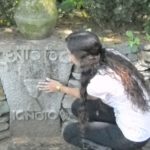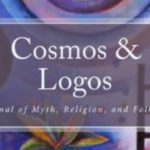
Doctor, nurse, pastoral or spiritual counselor, Jungian analyst, addiction treatment specialist, social worker, shaman, coach… There may be many monikers and sub-categorizations in today’s world, but all healers share the same objective: To help their clients overcome stumbling blocks, move through loss, find deeper meaning and interpersonal connection, and function at their highest potential.
In order to achieve this expertise, most people complete degrees in the requisite fields. But how often do they continue their education in order to bring a much-needed interdisciplinary perspective to their work? How many healers incorporate the numinous realms of the psyche—meaning the unconscious, spiritual beliefs, dream life, the imagination, our connection to mystery, myth, archetype and the natural world—into their discussions of how we function in society, what bonds us to one another, what causes our psychoses and neuroses, and what helps us to individuate and become the people we were meant to be?

A lot of people thought it was a crazy idea for me to get an MA in counseling psychology. Why so much schooling, when I already had a BA and MA in (research) psychology from Stanford University?
I couldn’t give a straight answer. I didn’t know which direction I was headed, but I longed for a grand adventure, one that would expose me to thinking about the world in new and unfamiliar ways. I did sense, intuitively, that I wanted to dig deeper with people, to go beyond the surface level of listing their goals and complaints in order to truly understand what makes them tick and what, fundamentally, has prevented them from getting where they want to be.

The school I chose was a bit unconventional, and also surprised many people in my life who knew me as a hard-driving Stanford grad. Pretty much all I knew when I applied was that Pacifica Graduate Institute is home to the library of mythologist, scholar, all-around amazing human, and my personal hero, Joseph Campbell. I had read The Hero with A Thousand Faces and watched Bill Moyers’ special on Campbell The Power of Myth. I knew there was something in his work that spoke to me about the universality of human experience, which is expressed in so many fantastic and glorious ways through the lens of various cultures. The fact that Campbell donated his library to Pacifica says so much about the way the school approaches therapeutic traditions closely linked to mythology, the humanities, and Jungian psychology.

My education opened me to the mythological and the magical. While in the program, I discovered that one of my classmates and closest friends had lived on the same street as me at the same time in Paris a few years prior. Seven years after completing my degree, I would move home to Hawaii to raise my children closer to my parents, and discovered incredible synchronicity that Joseph Campbell himself had lived in the apartment just below mine – and that his wife (the renowned dancer and choreographer Jean Erdman) still does and just turned 100. Were these mere coincidences? With a Jungian lens, I would call them synchronicities-signs that I am following the path I was meant to travel in this life. Each of these discoveries lent me confidence that my soul was guiding me where I needed to be…. because I was listening to it and allowing mysteries to unfold.
As Joseph Campbell himself put it:
If you do follow your bliss you put yourself on a kind of track that has been there all the while, waiting for you, and the life that you ought to be living is the one you are living. Follow your bliss and don’t be afraid, and doors will open where you didn’t know they were going to be.
Perhaps what surprised and delighted me most about my experience was how much I learned about myself. My time in therapist training encouraged me to take a deep dive into my own psyche, to see what monsters I found dwelling in the darkness, and to find the magic in my own dreams. I completed my master’s thesis on the more traditional path of becoming a therapist, and I can honestly say that I am a more thoughtful, integrated person and coach as a result. I also discovered that of my 30 colleagues, some were training to become psychotherapists, but many were using their educational experience as a springboard into other forms of healing-oriented work: substance abuse counseling, medicine, and education at all levels, for example.
I would love to see more coaches and healing professionals of all kinds traveling in a similar direction. Not just looking at the most obvious physical and mental cues, but fearlessly delving into the realms of the spiritual and the unconscious with their clients and patients, and with themselves.
I feel strongly that anyone with a calling to work with others needs to take the time to explore their own self first. Jung said we can only take others as far as we ourselves have gone… That goes for our relationships with not just clients and patients, but also partners, children, friends, lovers, and parents. When we discover the twists and turns of our own psyches, see the mind-body connection at work within ourselves, and perceive how our way of dealing with life is shaped not only by our own past but also our cultural and societal context, we open ourselves to a far richer conversation with the world.
Joseph Cambray, the Provost of Pacifica, recently said, “So much of human suffering is very intimately tied up with non-conscious levels that it’s hard to imagine we could ameliorate symptoms without a depth perspective.” We tend to live in a split world, where we keep a part of ourselves hidden from view. Our outward facing persona is all we expose to others, but then there is the rest of us, buried beneath the surface.
If you think of human beings as trees, you can envision us as having these root systems that lie far beneath the surface of the Earth, which are just as extensive as the trunks and branches we have growing in plain view. Do botanists explore only the branches of a tree? No, they examine that plant’s entire structure. So, too, do healers need to invite the whole person into the room by looking at the entire system supporting their clients and patients—including belief systems and patterns of thinking they have been forming since birth, which they may not even be aware of on a conscious level.
“Can a healer stay in a purely cognitive conversation about symptoms and treat the whole individual? So much of healing, illness and suffering can show up at the level of body – yet are those symptoms really extricable from what is going on in the patient’s mind? Can you divide them?” Dr. Cambray questioned. “Even with purely organic illnesses, we can ask, ‘Why is this manifesting for this particular person at just this moment in his or her life?’ It’s not about blaming the person but rather engaging with what is going on physically, psychologically, emotionally—and not just for that person, but for the society as a whole and even the environment of our planet.”
Recently, I spoke with my classmate Ed Santana about his experience. After completing his MA with me, Ed continued on for a PhD at Pacifica. He currently practices as a therapist, teaches classes, and is a researcher in the field of depth psychotherapy. He came to Pacifica from Washington, DC, where he had enjoyed powerful positions in politics and corporate America, and had been determined to help foster change in the world, particularly on social and human rights issues. Through his MA and PhD, he has been able to imbue his background in leadership work and corporate change with the psychological, spiritual and mythological elements crucial to addressing the range of conscious and unconscious factors emerging in individuals and systems.
“Whether working with members of Congress or in corporate board rooms, I always felt there was much more going on beneath the surface of the odd dynamics emerging in high-pressure situations,” Santana said. “When I found C. G. Jung’s work, an entire world opened up to me. My depth psychology education gave me a lens with which to understand the complex worlds around me.”
I loved completing the training to be a psychotherapist, and truly believe it has contributed to my understanding of myself and my clients, as well as my family members and friends. I hope to one day complete a PhD in Integrative Therapy and Healing Practices. I believe that doing so would enable me to continue the work I started nearly a decade ago: deepening my practice and individuation work, developing original scholarly work to publish, exposing me to integrative theories and skills that would broaden perspectives and support my work, and allowing me to form relationships with colleagues committed to engagement with larger dimensions of the psyche. Once again, the non-conventional path seems to be calling from within.
Our very troubled world requires the confluence of many experts who have integrated multiple careers to serve our diverse world in ways that are emerging as new and highly differentiated. As a society, we need to think outside the narrow confines of traditional degrees and labels in order to reach the world where the world really lives. Many of the very people we seek to support do not want only psychotherapy within the traditional therapeutic setting—though some do. There has to be more. We ought to be willing to find people in the settings and doing the work in ways that best helps them to thrive, whether as art therapists, dance therapists, somatic therapists, ecotherapists, health and wellness coaches, nutrition coaches, reiki healers, masseuses, yoga teachers, naturopathic doctors, writing coaches or… the list goes on.
If you’re doubting what step to next take on your healing career path, leap with me—into the unknown, the deep, dark, yet ultimately fascinating and rewarding realm of the unconscious.




